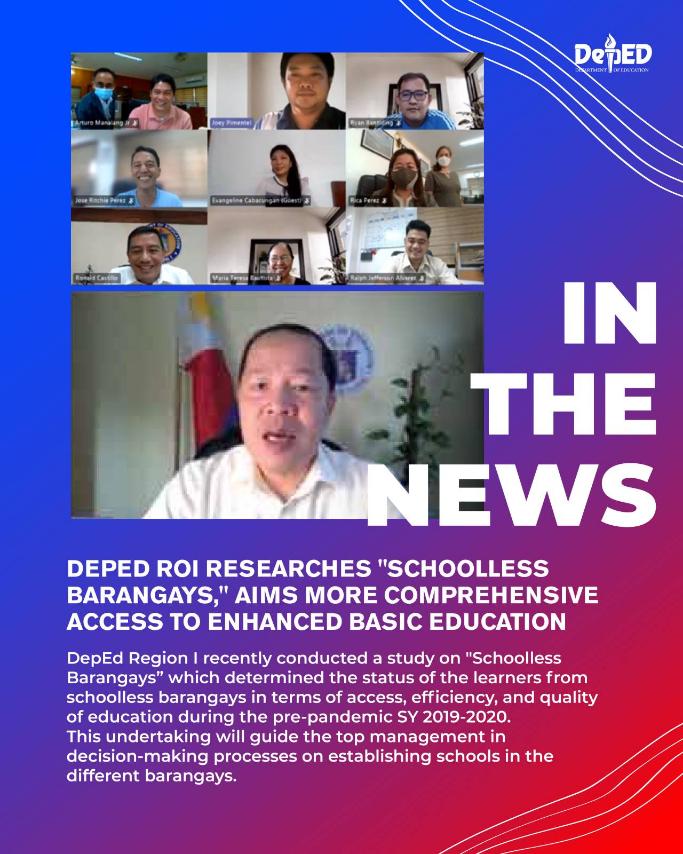 |
SAN FERNANDO CITY, March 16, 2022 – The Department of Education Regional Office I (DepEd ROI), through the Policy, Planning, and Research Division (PPRD), recently conducted a study on “Schoolless Barangays.”
The research revealed that out of 3,267 barangays in the four provinces, 116 municipalities, nine cities, and 989 barangays (30.27%) of the Region do not have an elementary school. However, 564 barangays have secondary schools.
The study also determined the status of the learners from schoolless barangays in terms of access, efficiency, and quality of education during the pre-pandemic School Year 2019-2020.
This undertaking will guide the top management in decision-making processes on the Region’s passion of establishing schools in the different barangays, as provided by the DepEd Order titled Revised Guidelines on the Establishment, Merging, Conversion, and Naming/Renaming of Public Schools, and Separation of Public-School Annexes in Basic Education.
PPRD Chief Education Supervisor Cecilia P. Rosido, research team leader, said that there are schoolless barangays in Region I, specifically in far-flung areas, which make accessibility of learners to school a paramount concern.
With limited access to school, learners go to nearby barangays to enroll but eventually drop due to transportation costs and allowance, while others decide not to go to school anymore.
Anchored within the context of the principle “bringing the school closer to the pupils,” Rosido added that Regional Director Tolentino G. Aquino encouraged the PPRD to survey schoolless barangays.
RD Aquino is planning interventions to provide the school-aged children with more comprehensive access and better delivery of enhanced complete basic education in these barangays.
The provision of the DepEd Order highlighted that there should be at least one elementary school for every barangay and at least one high school for every municipality or city.
With 1,291,071 enrollees in the Region, 60,984 came from schoolless barangays.
Meanwhile, the research revealed that learners outside the catchment area – within a two-kilometer radius and one-kilometer radius from a public school in rural and urban areas, had more absences than those who traveled nearer; hence, the completion of the school year decreases.
Those walking have lower grades than those who traveled using their service and private vehicle and those who availed public transportations.
The research recommends the adoption of alternative delivery modes of learning that may increase the participation rate. They include strengthening collaboration with community officials, non-government organizations, and other stakeholders.
The possibility of establishing new schools in the barangays without schools is also considered.
The research study was already disseminated to 14 SDOs in Region I.
END


